Essential Guide to Shipping Ecommerce: Best Practices for Success
23 Dec 2024
|by diadmin

Shipping ecommerce orders can be a game changer—or a headache. Here’s the problem: customers today expect their orders fast, with flexible shipping services, real-time tracking, and, ideally, affordable or free shipping. But for ecommerce businesses, that’s not always easy.
Shipping costs add up. International regulations get complicated. And when deliveries are late or tracking is unclear, customers notice—and remember. The stakes are high. Get shipping right, and you win loyal customers. Get it wrong, and you risk losing them to a competitor.
In this guide, we’ll break down the essentials of a successful ecommerce shipping strategy. From smart shipping methods to cost-saving tactics, you’ll learn how to make shipping work for you. Let’s dive in.
Understanding Ecommerce Shipping
What is Ecommerce Shipping?
Ecommerce shipping is more than just getting products from point A to B. It’s the process that brings an online order from a retailer’s warehouse right to a customer’s doorstep. This includes everything from packaging and labeling to tracking and final delivery. A crucial part of this process is creating a shipping label, which provides pertinent customer information and ensures proper handling of shipments. An effective ecommerce shipping strategy covers all the details needed to ensure that orders are shipped safely, on time, and cost-effectively.
Why Ecommerce Shipping is Crucial for Success
Shipping isn’t just a logistical step—it’s part of the customer experience. For ecommerce businesses, shipping can create customer loyalty or lead to cart abandonment. Understanding and utilizing various shipping services can help meet diverse customer needs and enhance satisfaction. A smooth, reliable shipping process builds trust and satisfaction, increasing the chances of repeat business and positive reviews. Plus, a well-thought-out shipping strategy can help control shipping costs and improve efficiency, giving you a competitive edge.
With a clear understanding of why shipping matters, it’s time to explore the various shipping methods and strategies that can make a big difference in your ecommerce success.
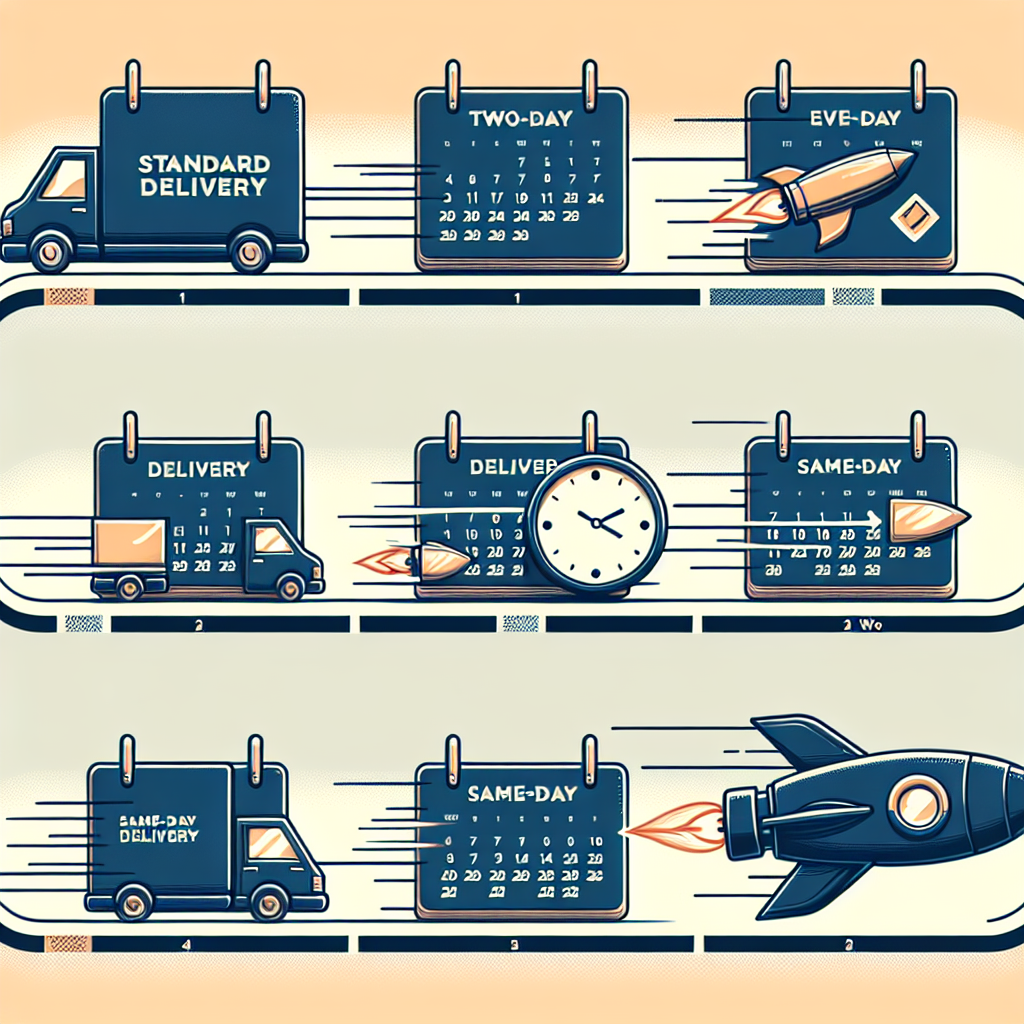
Ecommerce Shipping Methods and Strategies
Types of ecommerce shipping models
Ecommerce shipping isn’t one-size-fits-all. Different products, customer needs, and distances call for different shipping models. Here’s a breakdown:
Standard Delivery (2-7 Days):
This is often the default, most cost-effective option for ecommerce shipping. Customers who aren’t in a rush generally choose standard delivery, which allows businesses to keep costs down and deliver within a reasonable timeframe.
Two-Day Shipping:
Popular for customers wanting their orders quickly without same-day delivery. Two-day shipping offers a balance of speed and affordability that enhances customer satisfaction.
Same-Day Delivery:
Ideal for urgent orders, same-day delivery requires warehouses close to metro areas and helps fulfill the need for speed among customers who value convenience.
Overnight Shipping:
Often used during holiday seasons or for last-minute gifts, overnight shipping is one of the premium shipping services that guarantees next-day arrival and is perfect for time-sensitive purchases.
International Shipping:
Expands your reach globally, but adds complexity with customs and regulations.
Eco-Friendly Shipping:
Uses sustainable practices like recyclable packaging or carbon-neutral carriers to appeal to environmentally conscious customers.
Choosing the Right Shipping Method
Selecting the right shipping method depends on a few key factors: the product type, distance, and customer expectations. Offering multiple shipping options can help cater to different needs—some may want express shipping, while others prefer eco-friendly choices. Using data and analytics to track performance and costs can also help you find the best shipping methods that works for your business and your customers.
Now that you have a grasp on shipping models and strategies, let’s tackle one of the biggest concerns for ecommerce businesses: managing shipping costs.
Managing Shipping Costs
Calculating shipping costs
Shipping costs can add up quickly, impacting your bottom line and potentially deterring customers if they’re too high. To calculate shipping costs accurately, consider the following factors: package dimensions, weight, shipping destination, and the specific shipping service you’re using. Many businesses use shipping calculators or consult with shipping experts to get precise estimates. Don’t forget to account for extras like packaging materials, insurance, and fuel surcharges—these can significantly affect your shipping costs.
Shipping cost strategies
To manage and reduce costs, ecommerce businesses often adopt various pricing strategies:
- Free Shipping: Offering free shipping can increase conversions and reduce cart abandonment, though it may require adjusting product prices to cover costs.
- Real-Time Carrier Rates: Providing real-time carrier rates helps build transparency and ensures customers only pay the exact shipping cost, which can enhance trust.
- Flat Rate Shipping: This is a straightforward option that simplifies the checkout experience by giving customers a predictable shipping rate, no matter their location. Using a shipping consolidator can also help lower costs by combining shipments and maximizing carrier efficiencies.
With a handle on calculating and managing shipping costs, let’s look at what to consider when shipping ecommerce orders internationally, where regulations and logistics can be even more complex.
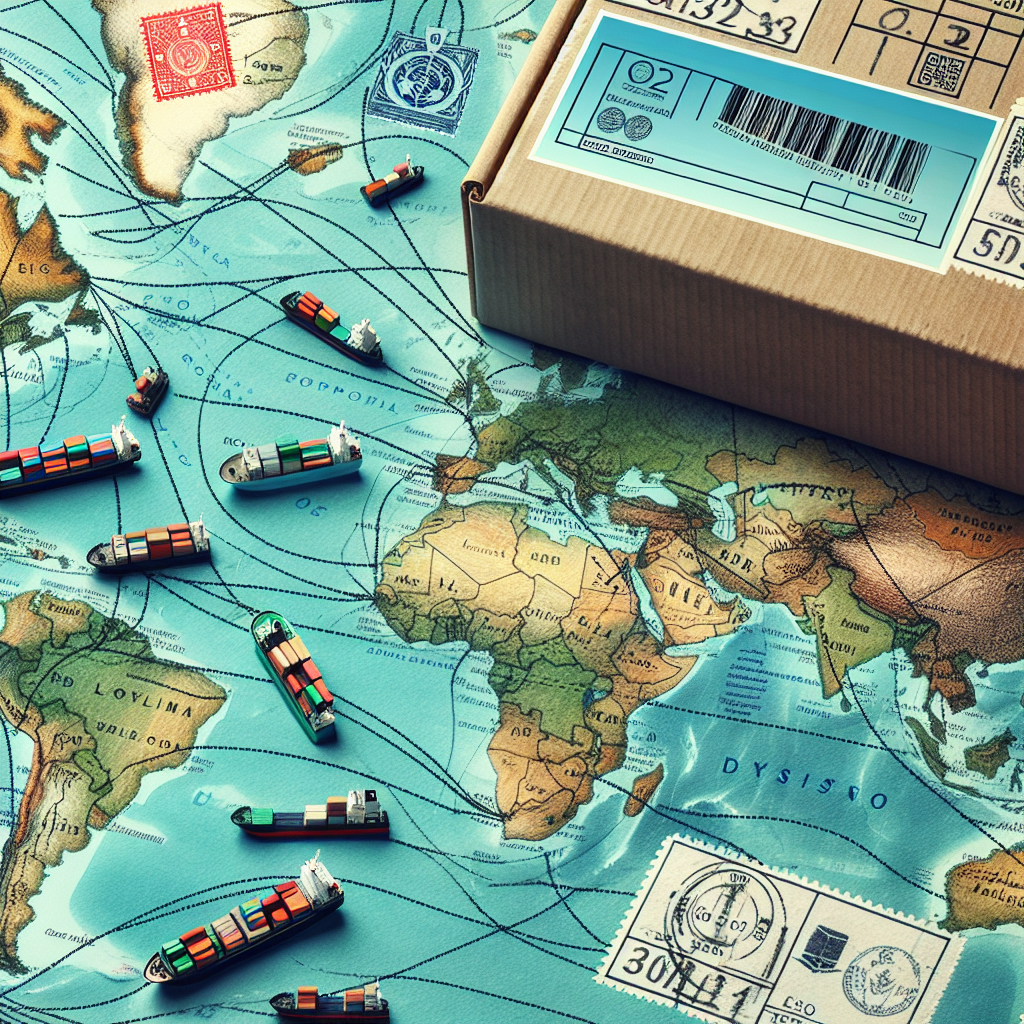
International Shipping Considerations
International Shipping Overview
Expanding your ecommerce business internationally opens up a world of new customers but comes with added complexity. International shipping involves navigating customs regulations, handling taxes and duties, and ensuring compliance with international shipping laws. To make the process smoother, it’s often best to partner with a reliable international shipping carrier who has experience in cross-border logistics and customs clearance.
International Shipping Carriers and Options
Choosing the right international shipping carrier is key to success. Research and compare carriers based on speed, cost, and reliability, and make sure they offer essential features like tracking and insurance. Carriers such as DHL and FedEx are popular for international shipments due to their global networks and experience with customs processes. These carriers often offer insurance and tracking, which are especially valuable for delivering valuable items and providing customers with peace of mind.
US Ecommerce Shipping Couriers
The United States has several ecommerce shipping couriers that offer a range of services to ecommerce businesses. Here are some of the most popular ones:
- USPS (United States Postal Service): USPS is one of the most popular ecommerce shipping couriers in the US. It offers a range of services, including First Class Package Service, Priority Mail, and Priority Mail Express. USPS is known for its affordability and extensive reach, making it a great option for small to medium-sized ecommerce businesses.
- UPS (United Parcel Service): UPS is another popular ecommerce shipping courier in the US. It offers a range of services, including UPS Ground, UPS 3-Day Select, and UPS Next Day Air. UPS is known for its reliability and fast delivery options, making it ideal for businesses that need to ship products quickly.
- FedEx: FedEx is a popular ecommerce shipping courier that offers a range of services, including FedEx Ground, FedEx Express, and FedEx Freight. FedEx is known for its extensive network and advanced tracking capabilities, providing customers with real-time updates on their shipments.
Now that we’ve covered the basics of international shipping and explored international carriers, let’s take a look at some of the top shipping carriers and solutions available for ecommerce businesses in Australia.
Ecommerce Shipping Carriers and Solutions
Ecommerce shipping carriers and solutions play a crucial role in the success of an ecommerce business. With so many options available, it can be overwhelming to choose the right one. In this section, we will explore the different types of ecommerce shipping carriers and solutions, their benefits, and how to choose the right one for your business.
Choosing the right ecommerce shipping carrier and solution is essential for ensuring timely and cost-effective deliveries. The right carrier can help you meet customer expectations, manage shipping costs, and streamline your logistics. When selecting a carrier, consider factors such as delivery speed, reliability, cost, and the range of services offered. Additionally, ecommerce shipping solutions can automate and optimize your shipping processes, saving you time and reducing errors.
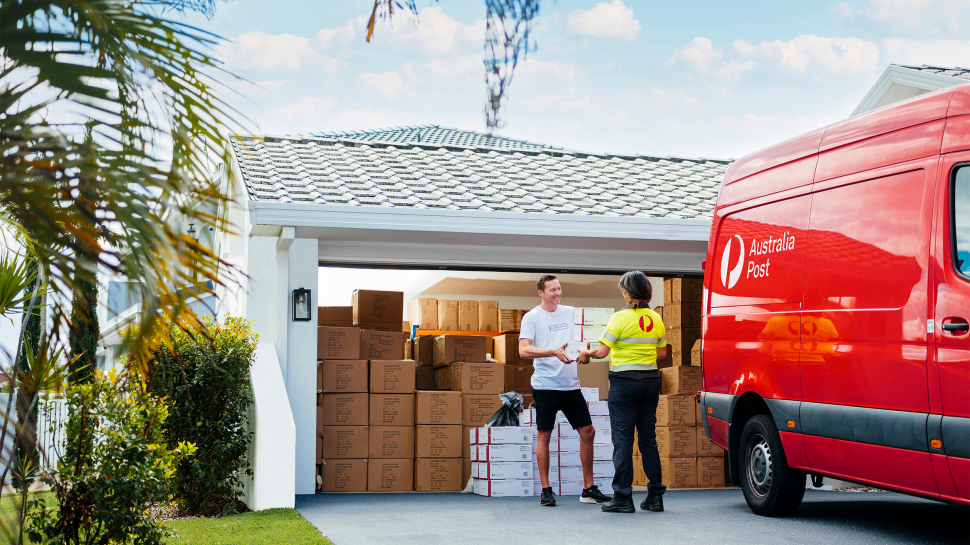
Australian ecommerce shipping couriers
Choosing the right shipping carrier and management solution is essential for ecommerce businesses aiming to provide smooth, efficient, and reliable deliveries. Here’s an overview of Australia’s top carriers, including their strengths and potential drawbacks, plus two powerful shipping solutions to streamline logistics.
Australian Ecommerce Shipping Carriers
Australia Post (AusPost)
Australia Post is Australia’s leading carrier, known for its extensive reach across both urban and rural areas. With a long-standing reputation for reliability, AusPost offers various delivery services that range from budget-friendly options to express international shipping.
Pros: Extensive domestic network, affordable rates for smaller packages, reliable domestic and international options with services like Parcel Post and Express Post.
Cons: Limited flexibility in same-day options; delivery delays can occur during peak seasons due to high demand.
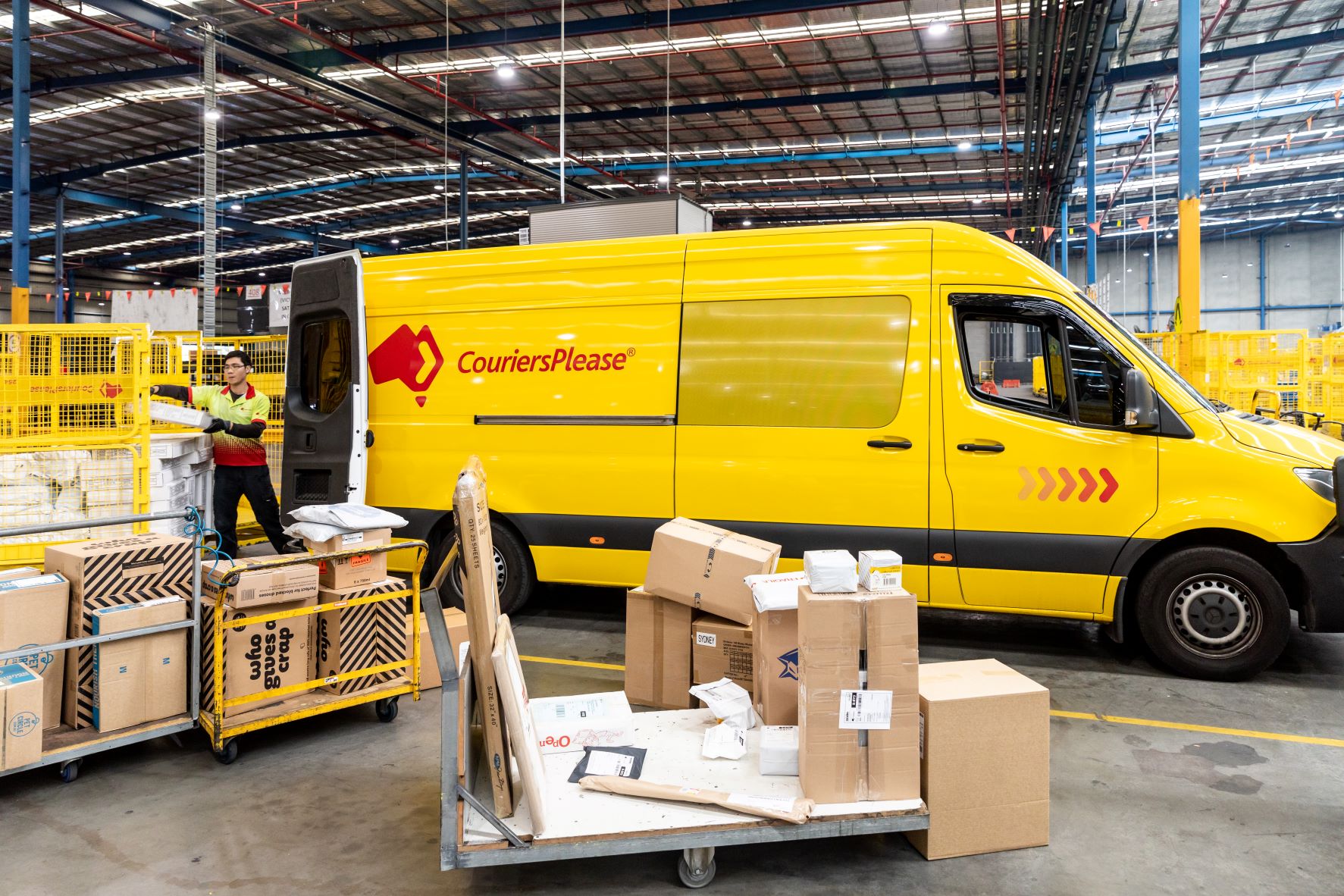
CouriersPlease
Specializing in urban and metro deliveries, CouriersPlease offers various quick delivery options, including same-day and next-day services. Known for its commitment to sustainability, CouriersPlease operates a fleet of electric vehicles to support eco-friendly shipping.
Pros: Ideal for metro areas, offers same-day and next-day delivery options, and eco-friendly initiatives with a fleet of electric vehicles.
Cons: Service may be limited outside urban areas; not as cost-effective for larger, heavy shipments.
Aramex Australia
Formerly known as Fastway, Aramex combines local expertise with a global network. Aramex offers smart parcel lockers, providing customers with flexible, secure pickup options and affordable rates for both domestic and international shipping.
Pros: Strong local expertise combined with global reach, smart parcel locker options for customer flexibility, and affordable rates for domestic and international shipping.
Cons: Not as fast as some competitors for express options; limited tracking visibility for some rural areas.

StarTrack
StarTrack, a subsidiary of Australia Post, focuses on high-volume, time-sensitive deliveries, making it popular with larger ecommerce brands. With its reliable infrastructure, StarTrack serves both urban and remote areas, often handling express and overnight deliveries.
Pros: Known for reliable, high-volume, time-sensitive deliveries with strong presence in both urban and rural locations, backed by Australia Post infrastructure.
Cons: Can be more costly for smaller shipments; overnight and express options may not be available in all locations.
Ecommerce Shipping Solutions

ShipMarvel (OMS)
ShipMarvel is a centralized platform designed for order and shipping management, automating processes like label printing, tracking, and order routing through API integrations. This solution simplifies the shipping workflow, making it a strong choice for businesses seeking to streamline their logistics.
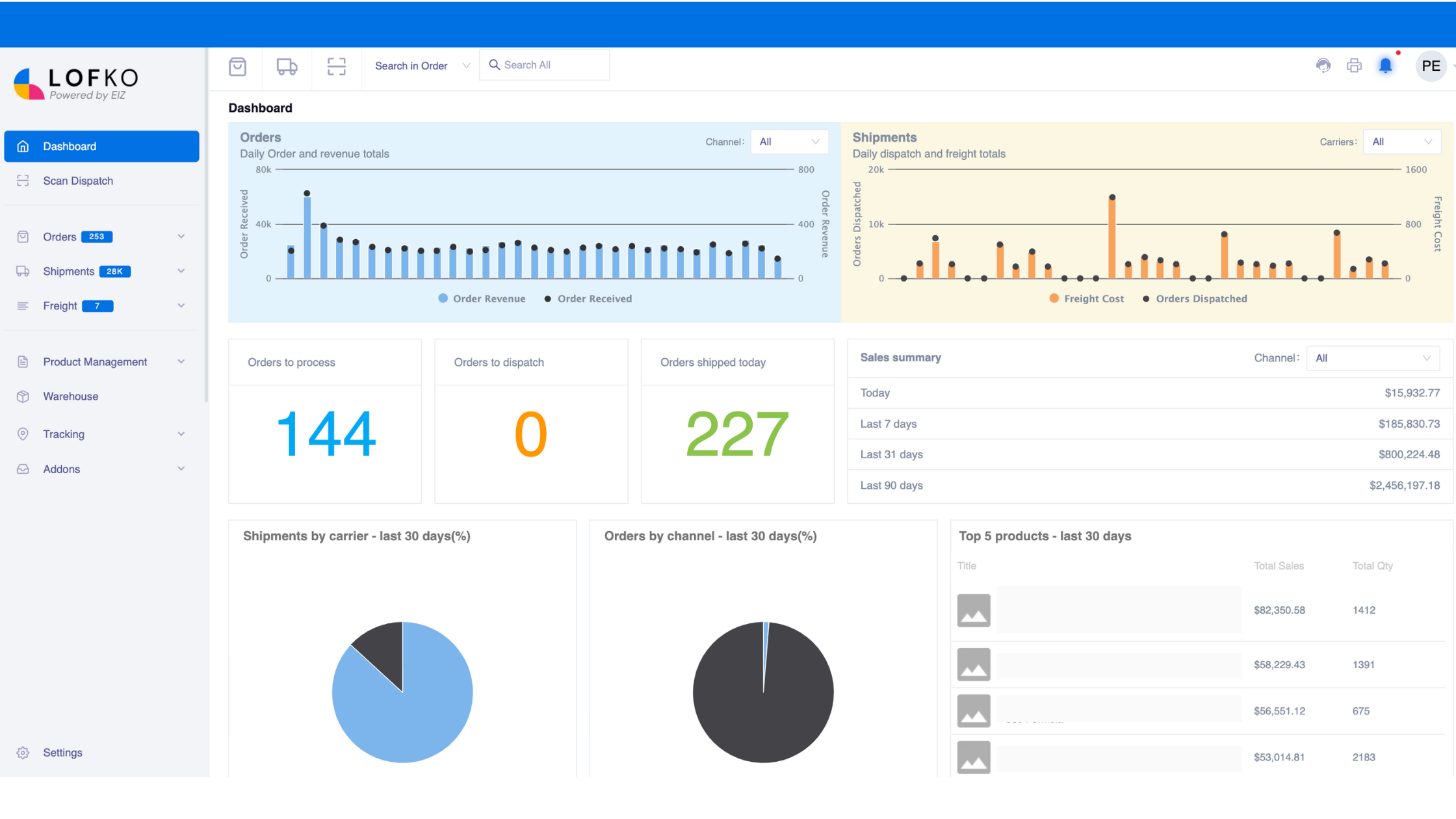
Lofko (OMS + WMS)
Lofko takes ecommerce management further by offering a complete solution that includes order, shipping, inventory, and warehouse management capabilities. It’s ideal for businesses wanting to centralize inventory control and shipping in one platform, providing end-to-end logistics support to ensure a smooth customer experience.
With these carriers and solutions, businesses can offer reliable delivery experiences that meet customer expectations. Next, let’s explore how to choose packaging and labeling that protects products and enhances the unboxing experience.
Ecommerce Packaging and Labeling
Packaging and labeling are often the first physical touchpoints a customer has with your brand, so they play a vital role in creating a positive experience. Well-chosen packaging not only protects your products in transit but also communicates your brand’s values, especially if you opt for eco-friendly or branded packaging.
Choosing the Right Packaging
Selecting the right packaging is essential to ensure products arrive intact and create a professional impression. Packaging should be durable and secure, especially for fragile or high-value items. For brands looking to stand out, branded packaging can elevate the unboxing experience, making it memorable for customers. And for eco-conscious shoppers, using sustainable materials like recycled cardboard or biodegradable fillers can make a big difference in customer satisfaction.
Eco-Friendly Packaging Options
Sustainability matters to many consumers today. Options like biodegradable materials, recycled paper, and minimalistic packaging can help reduce waste and appeal to eco-conscious customers. Some brands are even adopting reusable packaging options, such as cloth bags, to add an extra touch of environmental care.
Shipping Labels and Insurance
Shipping labels should be easy to read and include all necessary details, from tracking numbers to clear addresses. A well-prepared shipping label is crucial for streamlining the shipping process and ensuring proper handling of shipments, including international packages. Proper labeling reduces the risk of misdelivery or delays. Additionally, consider investing in shipping insurance for valuable or fragile items. Insurance can protect against loss or damage, adding an extra layer of security for your shipments.
With secure, eco-friendly packaging and accurate labeling in place, you’ll improve both customer satisfaction and delivery reliability. Next, let’s dive into the importance of tracking shipments and managing returns, both critical parts of a smooth ecommerce experience.
Tracking Shipments and Returns
A smooth order journey doesn’t end at dispatch—tracking and returns are essential to delivering a satisfying customer experience. By providing clear tracking information and an easy returns process, businesses can build trust, manage customer expectations, and even increase repeat business.
Order Management and Tracking
A reliable order management system (OMS) helps track and manage orders from multiple channels, giving you and your customers real-time updates. Many shipping carriers now offer tracking and insurance options that allow customers to monitor their order’s journey from start to finish. Real-time tracking reduces customer inquiries about delivery status and gives buyers confidence that their order is in safe hands.
Managing Ecommerce Returns
Returns are a natural part of ecommerce, and a clear return policy is essential for customer satisfaction. Offering easy return shipping options—like prepaid labels or drop-off locations—simplifies the process for customers and makes them more likely to shop with you again. Additionally, using analytics to monitor returns can help optimize return methods and manage costs more effectively.
Providing reliable tracking and a customer-friendly returns process shows you’re committed to a seamless buying experience. Now, let’s look at how ecommerce integrations and APIs can further streamline your shipping and fulfillment processes.
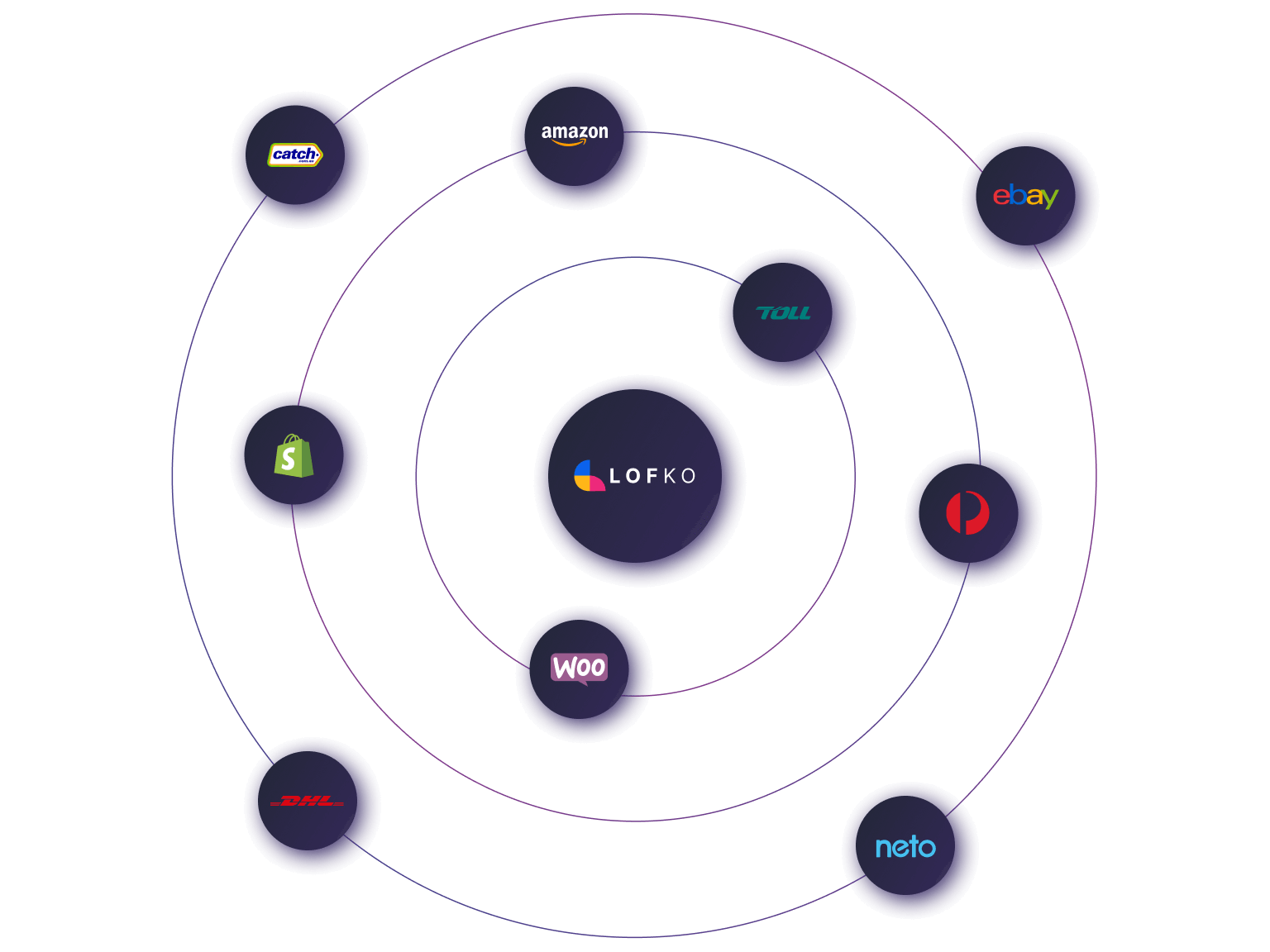
Ecommerce Shipping Integrations and APIs
By connecting your shipping processes directly to your ecommerce platform, you can automate tedious tasks, improve accuracy, and keep customers happy with real-time updates—all without breaking a sweat.
Ecommerce Platform Shipping Integrations
Most ecommerce platforms, like Shopify and WooCommerce, come with built-in integrations to connect you directly to carriers. What does that mean for you? Automating essentials like label printing, tracking updates, and shipping rate calculations. Everything is in one place, and customers can track their orders directly from your website. Simple, efficient, and less room for human error.
Shipping APIs and Developer Tools
Want even more control? Shipping APIs allow you to build custom shipping workflows to meet your business’s exact needs. Connect directly with carriers, automate tracking and returns, and customize shipping notifications to keep customers in the loop. For those who want extra functionality, developer tools make it easy to fine-tune processes so your shipping is as unique as your brand. Plus, by using data and analytics, you can make smarter decisions to cut costs and improve shipping efficiency.
With the right integrations, you’re not just improving shipping—you’re enhancing the entire customer experience. Now, let’s dive into the best practices to turn your ecommerce shipping into a key success driver.
Best Practices for Ecommerce Shipping Success
Mastering ecommerce shipping is all about balancing speed, cost, and customer satisfaction. When done right, it can be a powerful driver of loyalty and sales. Here are a few best practices to help you make shipping one of your business’s biggest strengths.
Setting Ecommerce Shipping Rates and Methods
Pricing your shipping options correctly is key. Offering free shipping, for example, can reduce cart abandonment and increase conversions, but it might require you to absorb or offset costs elsewhere. Flat-rate shipping is another simple, predictable option that many customers appreciate. Whatever you choose, using data and analytics can help you see what works best for your customers, keeping your shipping strategy as efficient and cost-effective as possible.
Packaging and Marketing
Packaging and marketing are essential components of ecommerce shipping. The right packaging can help protect your products during shipping, while also providing a positive unboxing experience for your customers. Here are some tips for packaging and marketing your ecommerce shipments:
- Use sturdy packaging materials: Ensure that your packaging materials can withstand the rigors of shipping. This includes using strong boxes, bubble wrap, and packing peanuts to protect your products from damage.
- Consider custom packaging: Custom packaging that reflects your brand’s identity can enhance the unboxing experience for your customers. This can include branded boxes, tissue paper, and stickers that showcase your brand’s logo and colors.
- Include a personalized note or insert: Adding a personalized note or insert in your packages can provide a positive unboxing experience for your customers. This can be a thank-you note, a discount code for future purchases, or information about your brand.
- Consistent branding: Use shipping labels and packaging materials that are consistent with your brand’s identity. This helps reinforce your brand and creates a cohesive experience for your customers.
By focusing on packaging and marketing, you can create a memorable unboxing experience that delights your customers and encourages repeat business.
Insurance and Tracking
Protecting your shipments with insurance can save you from costly losses, especially for valuable items. Pairing this with real-time tracking helps reassure customers and keeps them in the loop on their order’s progress. Tracking not only gives customers peace of mind but also reduces inquiries, as they can monitor their order’s journey themselves.
Incorporating these best practices into your shipping strategy is the key to creating a smooth, reliable delivery experience that keeps customers coming back. Ready to turn shipping into one of your ecommerce superpowers? Follow these steps, adjust based on feedback, and watch your customer satisfaction soar.
Conclusion
An effective ecommerce shipping strategy is essential for customer satisfaction, loyalty, and operational success. From selecting the right shipping methods to managing costs and providing clear tracking options, a well-rounded strategy can enhance the customer experience and streamline business processes. Consider eco-friendly packaging options, partner with reliable carriers, and leverage data to refine your shipping approach. With the right practices in place, ecommerce businesses can stay competitive, reduce cart abandonment, and build long-term customer relationships.
FAQs
What is ecommerce shipping?
Ecommerce shipping refers to the process of delivering online purchases from a retailer to the customer, covering everything from packaging to final delivery.
How can I calculate shipping costs?
Shipping costs can be calculated based on package dimensions, weight, shipping zones, and selected carrier services. Additional costs like packaging and insurance should also be considered.
What are the best shipping options for fast delivery?
Popular options include two-day shipping, same-day delivery, and overnight shipping. Businesses can also offer expedited shipping for rush orders.
What is the advantage of using a 3PL for shipping ecommerce orders?
Third-party logistics (3PL) providers offer specialized expertise, technology, and a network of shipping solutions, helping ecommerce businesses reduce costs and improve delivery efficiency.
How can I reduce my shipping costs?
Strategies like offering flat rate or real-time carrier rates, using a shipping consolidator, and optimizing packaging can help reduce shipping costs. Free shipping may also increase conversions, but it’s essential to balance costs with profitability.